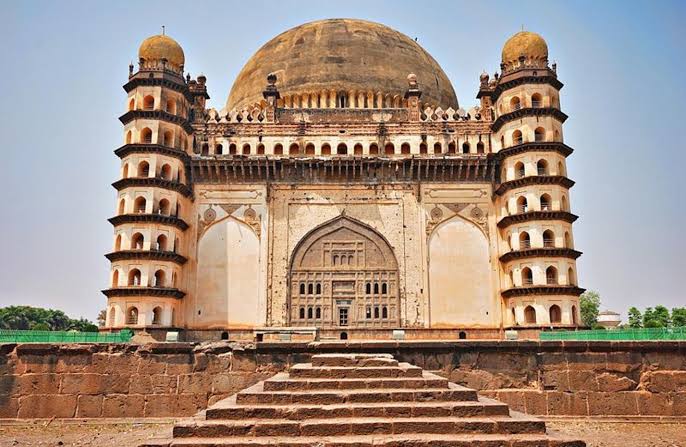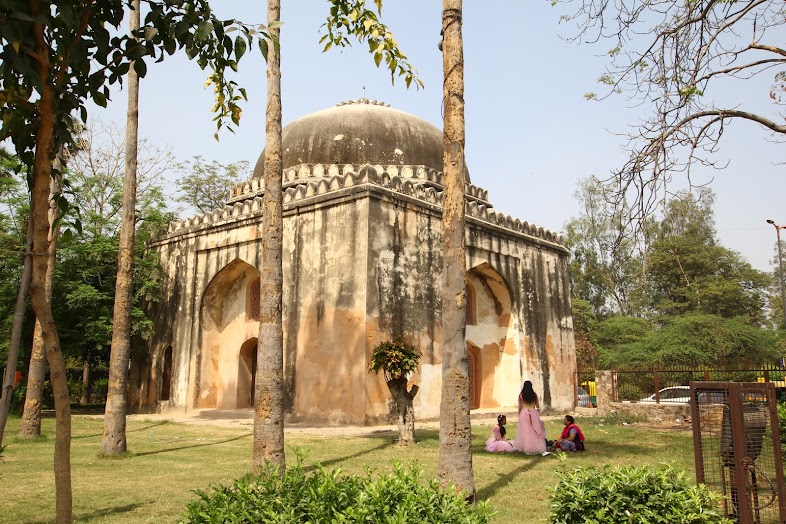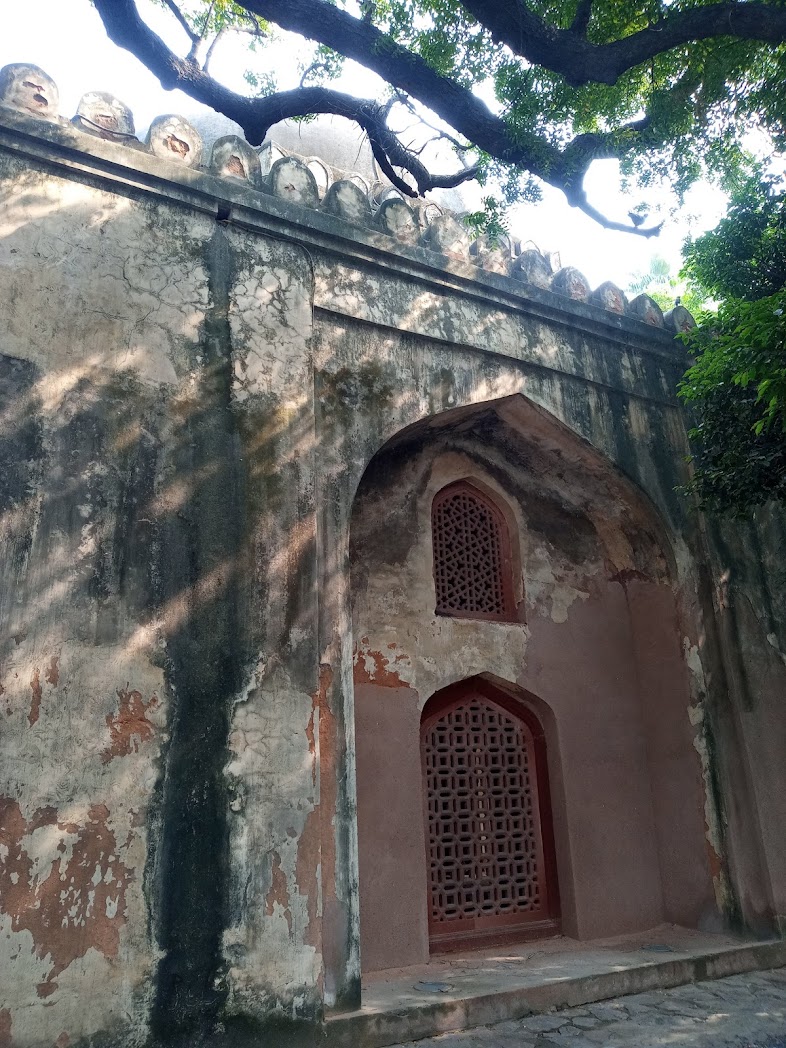



Historical Background: The Gol Gumbad, though lacking a notable name or association with a specific individual, holds a mysterious charm. Presently, there is no grave inside the tomb; however, historical records by Zafar Hasan in 1916 indicate the possible presence of two graves at one time. These graves lack any particular significance or inscriptions that would provide more context about the individuals buried there. Uniquely, unlike many other tombs from the Lodi period, Gol Gumbad does not have a mihrab, a prayer niche usually found on the western wall of Islamic tombs and mosques. Architectural Style: Gol Gumbad is a fascinating example of Lodi-period architecture. Built with a square base plan, its structure includes several distinctive features: Pointed Arch and Jali Work: The tomb has a recessed pointed arch and a central doorway adorned with intricate jali (lattice) work over the entrances. Southern Staircase: A staircase on the southern side provides access to the terrace, a common feature in Islamic architecture of that period. Decorative Dome: The dome's ceiling contains a circular medallion at the center, highly ornamental and showcasing intricate artwork that exemplifies the artistic expertise of the time. Parapet Battlements: At the parapet level, battlements add a defensive appearance, a characteristic external feature of Tughlaq and Lodi-period monuments. The structure is constructed with random rubble masonry, covered in a fine layer of plaster that has endured the test of time. Despite its simplicity, the tomb’s robust appearance and decorative details reflect the strength and elegance associated with Islamic architecture in Delhi’s medieval period.